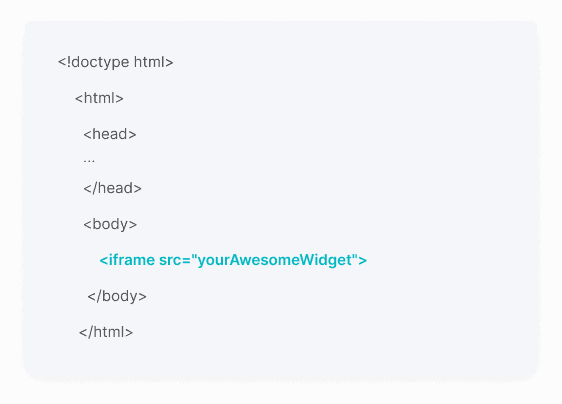Rucking Calorie Calculator
Discover exactly how many calories you'll torch during your weighted backpack workoutsHow Rucking Calorie Calculator Works
This calculator estimates how many calories you burn while rucking — walking or hiking with a weighted backpack. It takes into account your body weight, pack weight, pace, terrain difficulty, and gradient to give you accurate calorie burn estimates both per hour and for your total session.
Rucking burns 2-3 times more calories than regular walking because the added weight forces your body to work harder. The calculation uses a sophisticated formula based on the Pandolf Equation, originally developed by the US Military in the 1970s and updated with modern research to account for load carriage.
The calculator factors in terrain difficulty — from smooth pavement to challenging snow conditions — since different surfaces dramatically affect energy expenditure. A slight gradient can also significantly increase your calorie burn, making uphill rucking an incredibly efficient workout.
Beyond just calorie counting, this tool helps you plan effective rucking workouts for weight loss, fitness goals, or military training preparation. Many people find rucking more sustainable than high-intensity workouts because it's easier on the joints while still delivering serious results.
Rucking Calorie Calculator Formula Breakdown
Formula
Body weight in kg = Body weight in pounds ÷ 2.20462
Ruck weight in kg = Ruck weight in pounds ÷ 2.20462
Total weight in kg = Body weight in kg + Ruck weight in kg resistance, and the additional energy required for inclined walking
Load ratio = Ruck weight in kg ÷ Body weight in kg
Speed in m/s = (60 ÷ Pace in min/mile) ÷ 2.237
Base metabolic cost = 1.5 × Body weight in kg
Load carrying cost = 2 × Total weight in kg × Load ratio²
Speed factor = 1.5 × Speed in m/s²
Gradient factor = 0.35 × Speed in m/s × Gradient percentage
Load adjustment factor = 1 + Speed in m/s × 0.0782 + (Speed in m/s × Load ratio)² ÷ 4
Movement base cost = Speed factor + Gradient factor
Terrain movement cost = Terrain multiplier × Total weight in kg × Movement base cost × 1.1 × Load adjustment factor
Total energy in watts = Base metabolic cost + Load carrying cost + Terrain movement cost
Calories per hour = Total energy in watts × 0.000239006 × 3600Variables Explained
- WeightYour body weight in pounds, which serves as the baseline for calculating energy expenditure. Heavier individuals naturally burn more calories during the same activity.
- Ruck weightThe weight of your loaded backpack in pounds. This is typically 20-50 lbs for fitness rucking, though military training may use heavier loads. Don't add this to your body weight — the calculator handles it separately.
- Total timeDuration of your rucking session in minutes. Most beginners start with 30-60 minute sessions, while experienced ruckers might go for 2+ hours.
- Average paceYour walking speed in minutes per mile. Military standard is typically 15 minutes/mile (4 mph), while beginners often start at 20 minutes/mile (3 mph). Faster pace = more calories burned.
- GradientThe average incline or decline of your route as a percentage. Flat terrain is 0%, while hiking trails might be 5-15%. Even small gradients significantly increase calorie burn.
- TerrainSurface type affects how much energy you expend. Pavement is easiest, while sand and snow require much more effort. Trail conditions fall somewhere in between and add variety to your workout.
Example Calculation
Given:
- Weight: 170 lbs
- Ruck weight: 30 lbs
- Total time: 90 minutes
- Average pace: 15 minutes/mile
- Gradient: 2%
- Terrain: Pavement
Calculation:
Body weight in kg = 170 ÷ 2.20462 = 77.1107 kg
Ruck weight in kg = 30 ÷ 2.20462 = 13.6078 kg
Total weight in kg = (170 + 30) ÷ 2.20462 = 200 ÷ 2.20462 = 90.7185 kg
Load ratio = (30 ÷ 2.20462) ÷ (170 ÷ 2.20462) = 13.6078 ÷ 77.1107 = 0.1765
Speed in m/s = (60 ÷ 15) ÷ 2.237 = 4 ÷ 2.237 = 1.7887 m/s
Base metabolic cost = 1.5 × 77.1107 = 115.6661 watts
Load carrying cost = 2 × 90.7185 × (0.1765)² = 2 × 90.7185 × 0.03115 = 5.6508 watts
Speed squared = (1.7887)² = 3.1995
Speed factor = 1.5 × 3.1995 = 4.7993
Gradient factor = 0.35 × 1.7887 × 2 = 1.2521
Load speed factor = 1.7887 × 0.1765 = 0.3157
Load adjustment = 1 + 1.7887 × 0.0782 + (0.3157)² ÷ 4 = 1 + 0.1399 + 0.0249 = 1.1648
Movement base = (4.7993 + 1.2521) × 1.1 = 6.0514 × 1.1 = 6.6565
Terrain movement cost = 1 × 90.7185 × 6.6565 × 1.1648 = 702.97 watts
Total energy in watts = 115.6661 + 5.6508 + 702.97 = 824.29 watts
Calories per hour = 824.29 × 0.000239006 × 3600 = 708.85 kcal/hourResult:
~709 kcalExplanation
This example represents a solid intermediate rucking workout — a 90-minute session with a moderate 30-pound pack at military standard pace. This person would burn around 1,064 calories, equivalent to about 4 slices of pizza, making it an extremely effective workout for weight management and fitness.
Tips for Using Rucking Calorie Calculator
- 💡Start with 20-30 lbs at a 15-20 minute/mile pace if you're new to rucking, then gradually increase weight and speed as your fitness improves.
- 💡Choose varied terrain when possible — trails, hills, and different surfaces will boost calorie burn and make workouts more engaging than just walking on pavement.
- 💡Track your pace and weight consistently to monitor progress, but remember these are estimates — individual metabolism, fitness level, and walking efficiency all affect actual calories burned.
Make Your Own Web Calculator in 3 Simple Steps
Create Interactive Calculator
Design your interactive calculator in under 5 minutes using our drag-and-drop builder.Preview & Generate Embed Code
Review your calculator and copy the embed script when you're satisfied with the results.Embed Calculator Into Your Website
Paste the code into your website's HTML. Works on WordPress, Shopify, Wix, and any platform. EugenCreator of Creative Widgets
EugenCreator of Creative Widgets“After 10+ years in digital marketing, I’ve built calculators that drove thousands of new leads for clients. I realized one thing: calculators convert. They're killer for CRO and great for SEO. That's why I built Creative Widgets—an easy, no-code calculator builder. ”
It's free. Try it out. You'll like it.




